Check out our range of stock.
Didn't find what you like?
Send us a message
Found something out of stock?
Send us a message
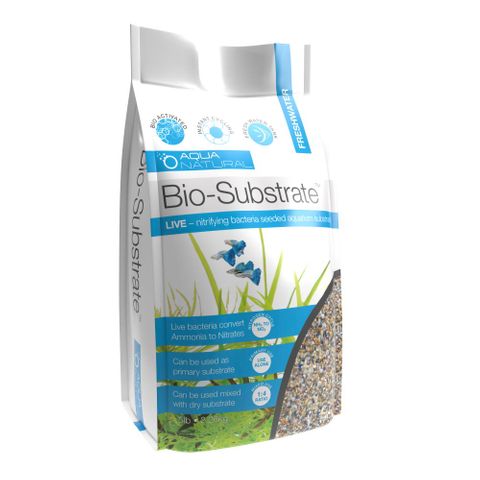
Aqua Natural Substrates All Aqua Natural gravel or substrates are 100% natural, sustainably sourced, triple washed and kiln dried. Our meticulously graded gravels and sands are the perfect natural substrates for any aquarium including planted tanks. Our high quality products create natural beauty combined with large surface areas for beneficial bacteria colonies and easy cleaning. Nitrifying Bacteria Pack contains bio activated live nitrifying bacteria to either use as a primary substrate or mix with substrate for a healthy aquarium. Contains a patented blend of live nitrosomas and nitrobacter bacteria which break down and convert harmful ammonia, into nitrates. Directions for use: PRIMARY (not mixed with Dry Substrate) Usage Calculator: Use 1lb (450g) of Bio-Substrate for every 1 gallons (3.8 litres) of water. • DO NOT rinse before use. • Spread substrate and fill with water slowly. Avoid stirring up the substrate. • Once the tank is filled, start your filter. Any cloudy appearance should clear over time. MIXED (mixed with Dry Substrate) Usage Calculator: Use 1lb (450g) of mixed LIVE Bio-Substrate and DRY Substrate for every 1 gallons (3.8 litres) of water. Mixing ratio is 1:4 (1 LIVE to 4 DRY). • DO NOT rinse before use. • Mix Bio-Substrate and Dry Substrate thoroughly. • Now spread mixed substrate and fill with water slowly. Avoid stirring up the substrate. • Once the tank is filled, start your filter. • Any cloudy appearance should clear over time. LIVE nitrosomas and nitrobacter bacteria are harmless to marine life. Use with any corresponding Dry Aqua Natural
$14.00
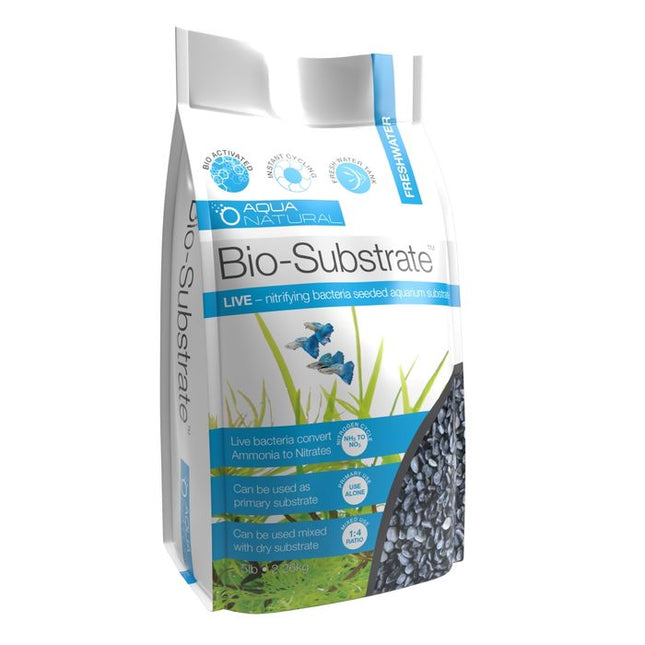
Aqua Natural Substrates All Aqua Natural gravel or substrates are 100% natural, sustainably sourced, triple washed and kiln dried. Our meticulously graded gravels and sands are the perfect natural substrates for any aquarium including planted tanks. Our high quality products create natural beauty combined with large surface areas for beneficial bacteria colonies and easy cleaning. Nitrifying Bacteria Pack contains bio activated live nitrifying bacteria to either use as a primary substrate or mix with substrate for a healthy aquarium. Contains a patented blend of live nitrosomas and nitrobacter bacteria which break down and convert harmful ammonia, into nitrates. Directions for use: PRIMARY (not mixed with Dry Substrate) Usage Calculator: Use 1lb (450g) of Bio-Substrate for every 1 gallons (3.8 litres) of water. • DO NOT rinse before use. • Spread substrate and fill with water slowly. Avoid stirring up the substrate. • Once the tank is filled, start your filter. Any cloudy appearance should clear over time. MIXED (mixed with Dry Substrate) Usage Calculator: Use 1lb (450g) of mixed LIVE Bio-Substrate and DRY Substrate for every 1 gallons (3.8 litres) of water. Mixing ratio is 1:4 (1 LIVE to 4 DRY). • DO NOT rinse before use. • Mix Bio-Substrate and Dry Substrate thoroughly. • Now spread mixed substrate and fill with water slowly. Avoid stirring up the substrate. • Once the tank is filled, start your filter. • Any cloudy appearance should clear over time. LIVE nitrosomas and nitrobacter bacteria are harmless to marine life. Use with any corresponding Dry Aqua Natural
$14.00
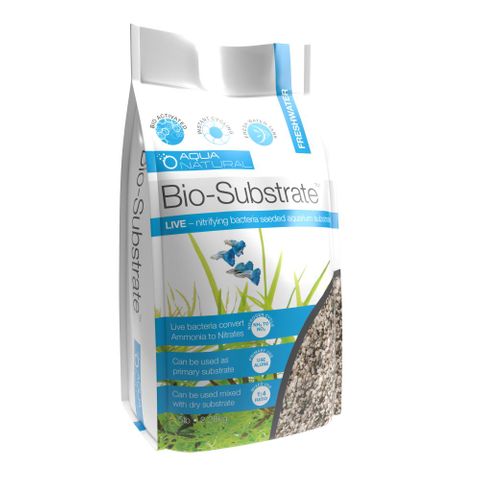
Aqua Natural Substrates All Aqua Natural gravel or substrates are 100% natural, sustainably sourced, triple washed and kiln dried. Our meticulously graded gravels and sands are the perfect natural substrates for any aquarium including planted tanks. Our high quality products create natural beauty combined with large surface areas for beneficial bacteria colonies and easy cleaning. Nitrifying Bacteria Pack contains bio activated live nitrifying bacteria to either use as a primary substrate or mix with substrate for a healthy aquarium. Contains a patented blend of live nitrosomas and nitrobacter bacteria which break down and convert harmful ammonia, into nitrates. Directions for use: PRIMARY (not mixed with Dry Substrate) Usage Calculator: Use 1lb (450g) of Bio-Substrate for every 1 gallons (3.8 litres) of water. • DO NOT rinse before use. • Spread substrate and fill with water slowly. Avoid stirring up the substrate. • Once the tank is filled, start your filter. Any cloudy appearance should clear over time. MIXED (mixed with Dry Substrate) Usage Calculator: Use 1lb (450g) of mixed LIVE Bio-Substrate and DRY Substrate for every 1 gallons (3.8 litres) of water. Mixing ratio is 1:4 (1 LIVE to 4 DRY). • DO NOT rinse before use. • Mix Bio-Substrate and Dry Substrate thoroughly. • Now spread mixed substrate and fill with water slowly. Avoid stirring up the substrate. • Once the tank is filled, start your filter. • Any cloudy appearance should clear over time. LIVE nitrosomas and nitrobacter bacteria are harmless to marine life. Use with any corresponding Dry Aqua Natural
$12.00
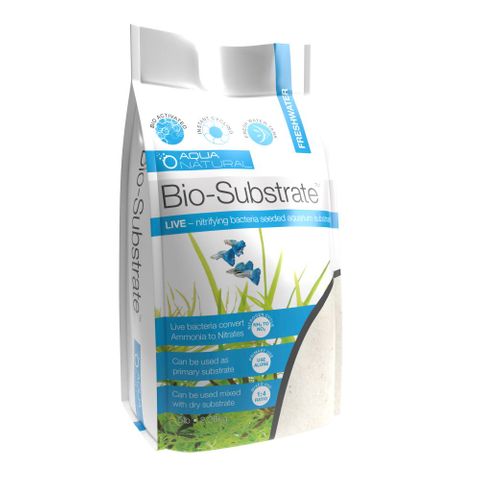
Aqua Natural Substrates All Aqua Natural gravel or substrates are 100% natural, sustainably sourced, triple washed and kiln dried. Our meticulously graded gravels and sands are the perfect natural substrates for any aquarium including planted tanks. Our high quality products create natural beauty combined with large surface areas for beneficial bacteria colonies and easy cleaning. Nitrifying Bacteria Pack contains bio activated live nitrifying bacteria to either use as a primary substrate or mix with substrate for a healthy aquarium. Contains a patented blend of live nitrosomas and nitrobacter bacteria which break down and convert harmful ammonia, into nitrates. Directions for use: PRIMARY (not mixed with Dry Substrate) Usage Calculator: Use 1lb (450g) of Bio-Substrate for every 1 gallons (3.8 litres) of water. • DO NOT rinse before use. • Spread substrate and fill with water slowly. Avoid stirring up the substrate. • Once the tank is filled, start your filter. Any cloudy appearance should clear over time. MIXED (mixed with Dry Substrate) Usage Calculator: Use 1lb (450g) of mixed LIVE Bio-Substrate and DRY Substrate for every 1 gallons (3.8 litres) of water. Mixing ratio is 1:4 (1 LIVE to 4 DRY). • DO NOT rinse before use. • Mix Bio-Substrate and Dry Substrate thoroughly. • Now spread mixed substrate and fill with water slowly. Avoid stirring up the substrate. • Once the tank is filled, start your filter. • Any cloudy appearance should clear over time. LIVE nitrosomas and nitrobacter bacteria are harmless to marine life. Use with any corresponding Dry Aqua Natural
$14.00 - $48.00
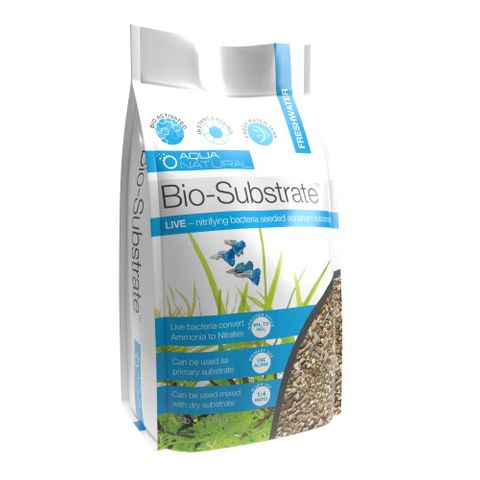
Aqua Natural Substrates All Aqua Natural gravel or substrates are 100% natural, sustainably sourced, triple washed and kiln dried. Our meticulously graded gravels and sands are the perfect natural substrates for any aquarium including planted tanks. Our high quality products create natural beauty combined with large surface areas for beneficial bacteria colonies and easy cleaning. Nitrifying Bacteria Pack contains bio activated live nitrifying bacteria to either use as a primary substrate or mix with substrate for a healthy aquarium. Contains a patented blend of live nitrosomas and nitrobacter bacteria which break down and convert harmful ammonia, into nitrates. Directions for use: PRIMARY (not mixed with Dry Substrate) Usage Calculator: Use 1lb (450g) of Bio-Substrate for every 1 gallons (3.8 litres) of water. • DO NOT rinse before use. • Spread substrate and fill with water slowly. Avoid stirring up the substrate. • Once the tank is filled, start your filter. Any cloudy appearance should clear over time. MIXED (mixed with Dry Substrate) Usage Calculator: Use 1lb (450g) of mixed LIVE Bio-Substrate and DRY Substrate for every 1 gallons (3.8 litres) of water. Mixing ratio is 1:4 (1 LIVE to 4 DRY). • DO NOT rinse before use. • Mix Bio-Substrate and Dry Substrate thoroughly. • Now spread mixed substrate and fill with water slowly. Avoid stirring up the substrate. • Once the tank is filled, start your filter. • Any cloudy appearance should clear over time. LIVE nitrosomas and nitrobacter bacteria are harmless to marine life. Use with any corresponding Dry Aqua Natural
$14.00
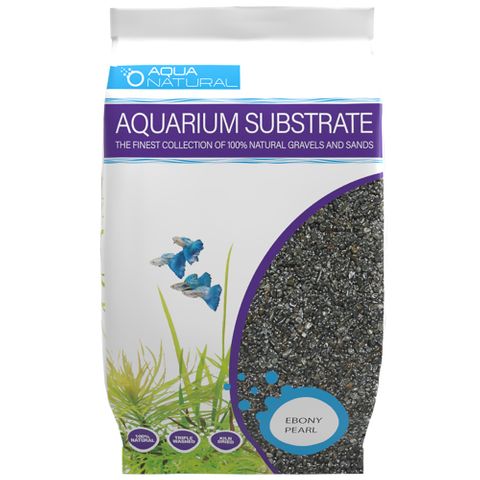
Granule Size: 2-4mm The darkest pebble on the market from the rivers of New Zealand we bring you Ebony. Ebony Pearl is a naturally smooth pebble sourced from New Zealand Southland's east coast beaches. Its pebbles are smooth and round or oval and have a get black look when wet. This pebble gives a tropical beach feel to any aquarium and is extremely unique. Aquarium safe Reptile safe Pure New Zealand Beauty Triple Washed
$20.00 - $35.00
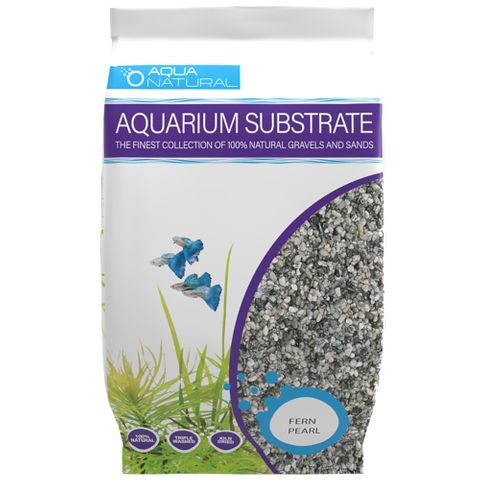
Granule Size: 2-4mm The soft green and greys of the New Zealand Silver Fern. Fern Pearl is a naturally smooth pebble sourced from New Zealand Southland's east coast beaches. Its pebbles are smooth and round or oval and have a soft white colour with greens, blues and greys sprinkled in the background. This pebble gives a tropical beach feel to any aquarium and is extremely unique. Aquarium safe Reptile safe Pure New Zealand Beauty Triple Washed
$20.00 - $35.00
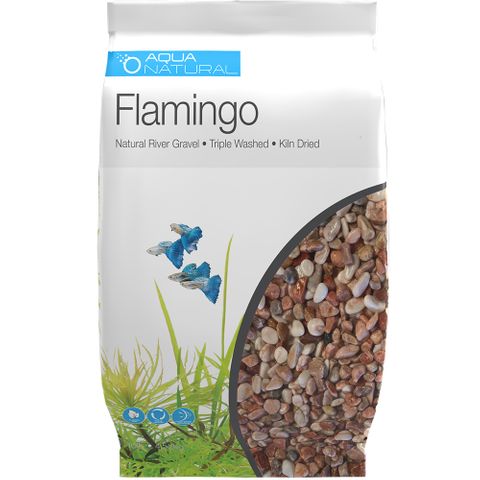
Granule Size: 2-4mm The soft green and greys of the New Zealand Silver Fern. Flamingo is a naturally smooth pebble sourced from New Zealand Southland's east coast beaches. Its pebbles are smooth and round or oval and have a soft white colour with greens, blues and greys sprinkled in the background. This pebble gives a tropical beach feel to any aquarium and is extremely unique. Aquarium safe Reptile safe Pure New Zealand Beauty Triple Washed
$20.00 - $35.00
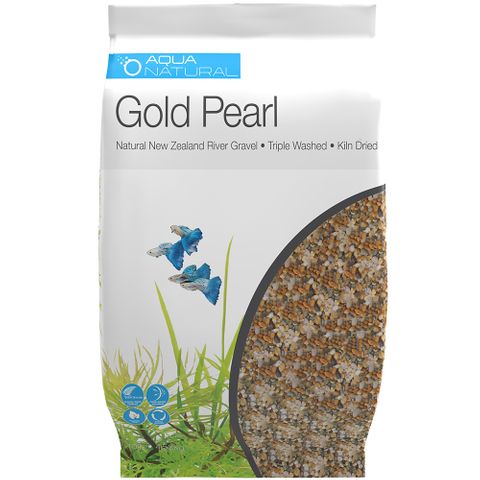
Granule Size: 2-4mm The soft green and greys of the New Zealand Silver Fern. Gold Pearl is a naturally smooth pebble sourced from New Zealand Southland's east coast beaches. Its shapes are perfectly round or oval and are a brilliant gold pebble with black, grey, brown, green and white pebbles sprinkled in the background. This pebble gives a tropical beach feel to any aquarium and extremely unique. Aquarium safe Reptile safe Pure New Zealand Beauty Triple Washed
$20.00 - $35.00

Granule Size: 2-4mm Aquarium safe Reptile safe Pure New Zealand Beauty Triple Washed
$20.00 - $35.00
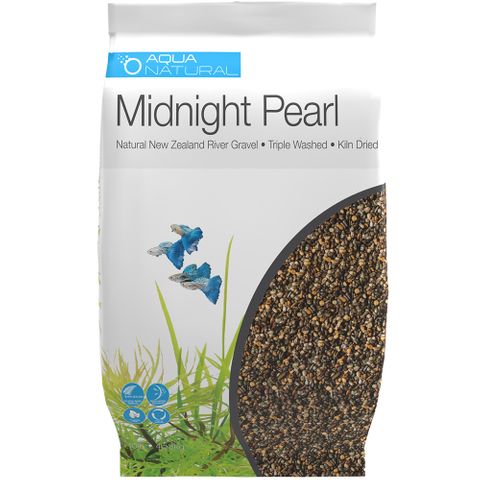
Granule Size: 2-4mm Sourced from ancient beach deposits of New Zealand and shaped by the Southern Ocean's waves. Midnight Pearl is naturally round gravel has a base of black pebbles with various shades of brown and grey pebbles mixed throughout with hints of gold pebbles to give a unique dark richness to the colour. This pebble provides a great backdrop for native features in aquariums and acts as a wonderful dark offset which brings out tropical fishes colours. Aquarium safe Reptile safe Pure New Zealand Beauty Triple Washed
$20.00 - $35.00
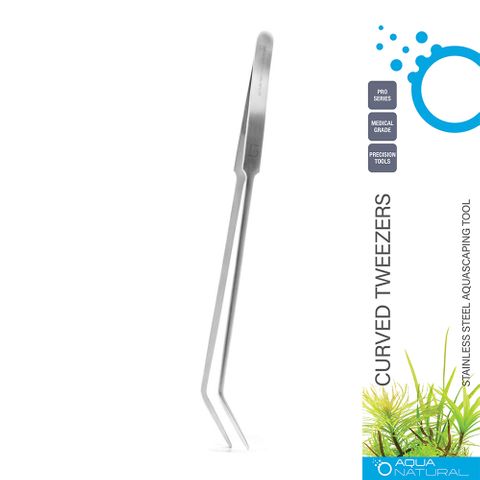
Aqua Natural’s fine stainless steel aquascaping tools are second to none. Our high quality tools are designed and made to the highest standards and are suitable for all aquascaping and terrarium building needs. Aqua Natural tools are NOT low quality tools mass produced in China that are sold by other suppliers. ALL AQUA NATURAL TOOLS ARE: Hand made from 100% Japanese Stainless Steel Surgical Grade Hardness Ergonomic and comfortable Will last a lifetime Perfect centre of gravity for precision work ALL TOOLS IN OUR RANGE: STRAIGHT SCISSORS 25cm STRAIGHT TWEEZERS 25cm CURVED SCISSORS 25cm CURVED TWEEZERS 25cm SPRING STRAIGHT SCISSORS 15cm FLATTENER 25cm Maintenance: Rinse and dry after each use
$57.00

Aqua Natural’s fine stainless steel aquascaping tools are second to none. Our high quality tools are designed and made to the highest standards and are suitable for all aquascaping and terrarium building needs. Aqua Natural tools are NOT low quality tools mass produced in China that are sold by other suppliers. ALL AQUA NATURAL TOOLS ARE: Hand made from 100% Japanese Stainless Steel Surgical Grade Hardness Ergonomic and comfortable Will last a lifetime Perfect centre of gravity for precision work ALL TOOLS IN OUR RANGE: STRAIGHT SCISSORS 25cm STRAIGHT TWEEZERS 25cm CURVED SCISSORS 25cm CURVED TWEEZERS 25cm SPRING STRAIGHT SCISSORS 15cm FLATTENER 25cm Maintenance: Rinse and dry after each use
$57.00
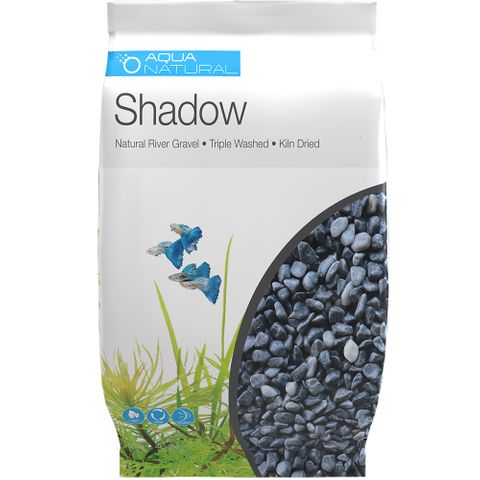
Granule Size: 2-4mm Sourced from ancient beach deposits of New Zealand and shaped by the Southern Ocean's waves. Shadow is naturally round gravel has a base of black pebbles with various shades of brown and grey pebbles mixed throughout with hints of gold pebbles to give a unique dark richness to the colour. This pebble provides a great backdrop for native features in aquariums and acts as a wonderful dark offset which brings out tropical fishes colours. Aquarium safe Reptile safe Pure New Zealand Beauty Triple Washed
$20.00 - $35.00
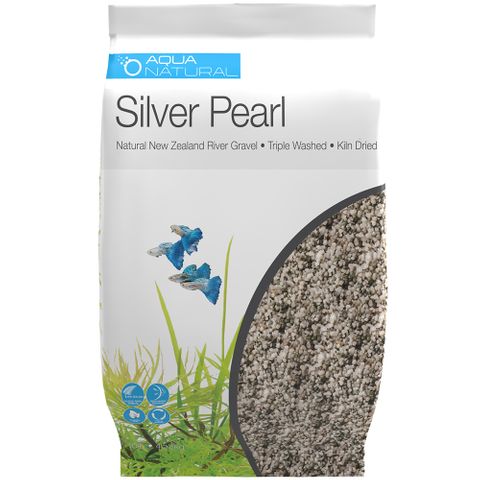
Granule Size: 2-4mm Sourced from ancient beach deposits of New Zealand and shaped by the Southern Ocean's waves. Shadow is naturally round gravel has a base of black pebbles with various shades of brown and grey pebbles mixed throughout with hints of gold pebbles to give a unique dark richness to the colour. This pebble provides a great backdrop for native features in aquariums and acts as a wonderful dark offset which brings out tropical fishes colours. Aquarium safe Reptile safe Pure New Zealand Beauty Triple Washed
$20.00 - $35.00

20cmX20cmX8cm (3.20 litres) Aqua Natural Zen Glass is a high quality aquarium with almost invisible silicone seams. The base is elevated which makes it appear as if it is floating. Hand Made using high quality low iron glass (iron in glass gives off a green blue tinge) this beautiful vessel is perfect for all small micro scaping artforms including wet and dry. While not specifically designed for fish, a few small fish can be kept if desired. Crystal Clear Low Iron Glass Hand Made 4mm Thick Transparent Silicone Joins
$119.00 - $150.00
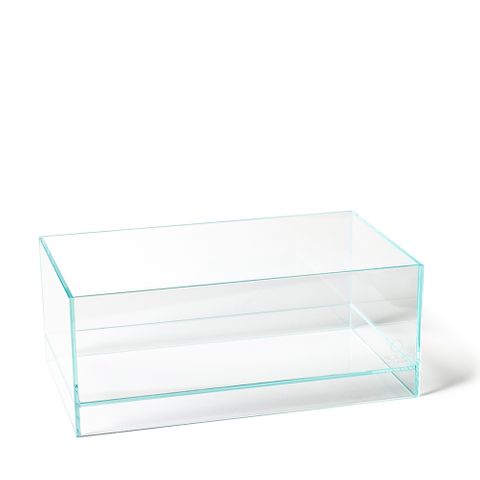
30cmX18cmX12cm (6.48 litres) Cover not available for this model Aqua Natural Zen Glass is a high quality aquarium with almost invisible silicone seams. The base is elevated which makes it appear as if it is floating. Hand Made using high quality low iron glass (iron in glass gives off a green blue tinge) this beautiful vessel is perfect for all small micro scaping artforms including wet and dry. While not specifically designed for fish, a few small fish can be kept if desired. Crystal Clear Low Iron Glass Hand Made 4mm Thick Transparent Silicone Joins
$124.00 - $154.00
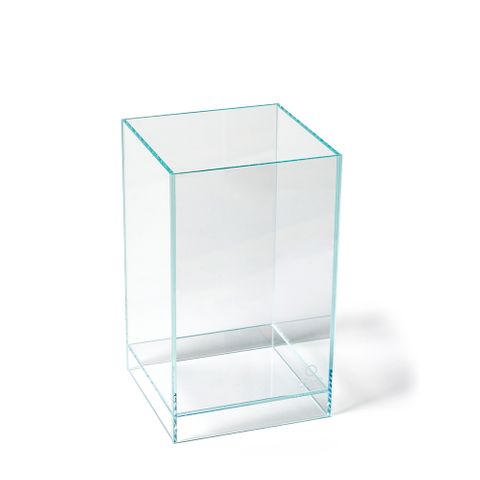
30cmX18cmX12cm (6.48 litres) Cover not available for this model Aqua Natural Zen Glass is a high quality aquarium with almost invisible silicone seams. The base is elevated which makes it appear as if it is floating. Hand Made using high quality low iron glass (iron in glass gives off a green blue tinge) this beautiful vessel is perfect for all small micro scaping artforms including wet and dry. While not specifically designed for fish, a few small fish can be kept if desired. Crystal Clear Low Iron Glass Hand Made 4mm Thick Transparent Silicone Joins
$115.00 - $165.00
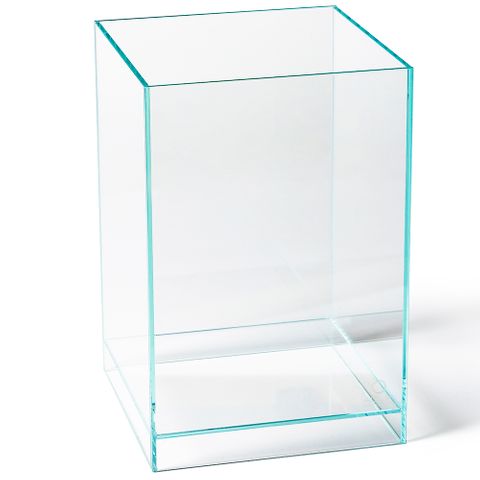
30cmX18cmX12cm (6.48 litres) Cover not available for this model Aqua Natural Zen Glass is a high quality aquarium with almost invisible silicone seams. The base is elevated which makes it appear as if it is floating. Hand Made using high quality low iron glass (iron in glass gives off a green blue tinge) this beautiful vessel is perfect for all small micro scaping artforms including wet and dry. While not specifically designed for fish, a few small fish can be kept if desired. Crystal Clear Low Iron Glass Hand Made 4mm Thick Transparent Silicone Joins
$134.00 - $184.00
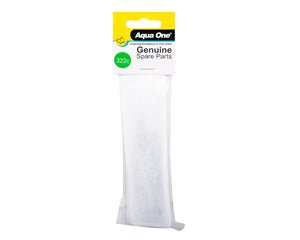
This Aquarium Set comes complete with: High Visibility Acrylic Tank 24.5 x 17.5 x 30.6cm 9.7L Integrated LED Light (Daylight and Night Mode) 2.1W Digital Temperature Display Integrated Back Filter 100L/hour 2.3W The Integrated Filter provides Biological, Mechanical and Chemical Filtration. The Integrated Thermometer ensures precise temperature monitoring with its digital temperature display.
$9.00 - $209.00

Aqua One Float Tanks provides a safe place for weak, sick or pregnant fish who require temporary isolation. Features & Benefits: Floats Easy to Assemble Can be set up to suit your individual needs Ideal isolation chamber for pregnant fish Provides a safe haven for weak or sick fish Base separator provides protection for new born fry Can be fixed to any part of the aquarium using the suction cups supplied
$16.00

The Aqua One Grounding Probe is designed to safely eliminate stray voltage and current from aquarium water. Electrical devices such as pumps, heaters and lights emit electromagnetic radiation which can build up in aquarium water resulting in discharges of stray voltage. The grounding probe will dissipate this energy, thus eliminating these discharges. The Aqua One Grounding Probe will also ground any leaking current resulting from damaged submersed electrical devices. When connected to a power outlet with a safety switch (GFCI or RCD), the grounding probe will trip the circuit if stray current enters the aquarium, eliminating the potentially harmful electrical hazard. Features & Benefits: Designed to safely eliminate stray voltage and current from aquarium water and ground any leaking current resulting from damaged submersed electrical devices. When connected to a power outlet with a safety switch (GFCI or RCD), the grounding probe will trip the circuit if stray current enters the aquarium, eliminating the potentially harmful electrical hazard. Prevents electric shocks. 4 metre cable length for added convenience. Suitable For: Coldwater, Tropical & Marine
$35.00

Aqua One Net Breeder Separation Box provides a safe place for pregnant, weak or sick fish who require temporary isolation. Featuring suction cups, it can be easily attached to any part of your aquarium. Specifications: Available in 2 sizes 56125 - Breeder Net (15.5 W X 14 D X 15cm H) 56130 - Breeder Net (27 W X 16 D X 15cm H)
$9.00 - $10.00
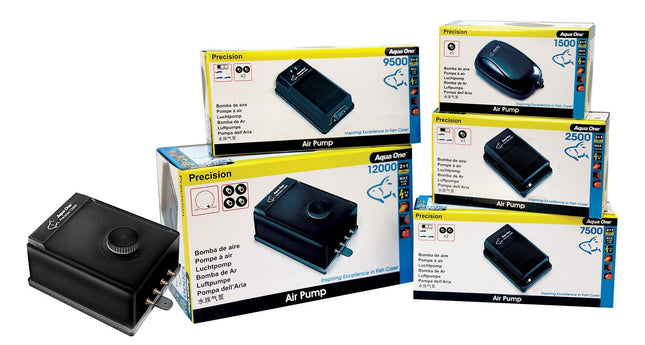
qua One Precision Air Pumps has defied the odds and become an institution which the aquatic trade refuses to let go of. Air pumps improve filtration system performance and overall water quality by increasing water flow which helps to eliminate localised build-up of toxic chemicals such as ammonia and nitrite. This makes for happy and healthy inhabitants. Features & Benefits: High quality robust units that have been built to last Silent operation Single and twin outlets Simple diaphragm replacement Specifications: Max Flow: 60L/hourWattage 2WOperating Voltage 240V/50HzNumber of Outlets 1Speed Control No Product Information Page: CLICK HERE Installation Instructions: CLICK HERE
$12.00

Aqua One Premium Nood is a uniquely shaped sintered glass biological media, that is ideal to use in all types of filters. Highly porous it provides the ideal environment for beneficial bacteria to colonise and thrive. Premium Nood acts both mechanically removing solid particles and biologically to convert ammonia to nitrite. This is important in all aquariums as ammonia and nitrite can prove lethal to your livestock. Premium Nood should be used as a permanent filter media. Suitable for: both freshwater and saltwater aquariums
$30.00

Aqua World Aquarium Glue is a superior Cyanoacrylate adhesive for gluing and mounting coral frags and colonies to reef rock or plugs. It bonds within seconds and has excellent control, hold and durability characteristics. It can even be used underwater. Aqua World Aquarium Glue can be used for any Aquascaping in freshwater or saltwater aquariums or for any plastics repairs THIS IS FOR ONE TUBE
$4.00
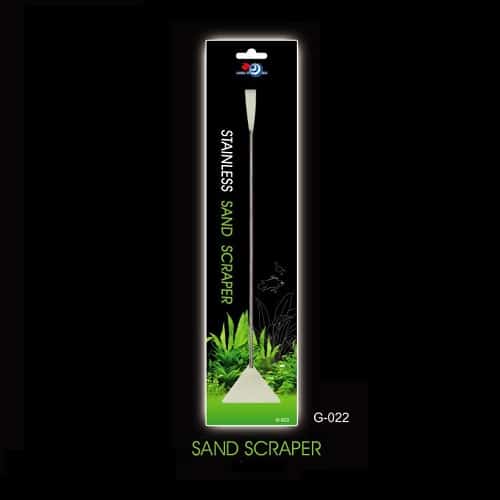
The Aqua World Sand Scraper makes decorating the gravel and sand in your tank a breeze! Benefits Made from Stainless Steel Perfect for rearranging tank substrate and plants
$14.95
$0.00

Whole Fish Turtle Treats – Pure, Nutrient-Packed Nutrition Nature’s Perfect Protein Source – Packed with Omega-3s, high-quality protein (min. 40%), and calcium, these whole fish treats deliver essential nutrients for strong growth, shell development, and overall vitality. 100% Natural – Nothing Added, Nothing Artificial✔ Rich in Omega-3 Fatty Acids – Supports healthy skin, shell, and immune function.✔ High Protein (Min. 40%) – Fuels muscle growth and energy for active turtles.✔ Natural Calcium Source – Promotes strong bones and shell integrity. Ideal For: Carnivorous & Omnivorous Turtles Aquatic Pets Requiring High-Protein Diets Pure & Simple: Made from 100% food-grade whole fish – no fillers, no additives, just nature’s best. Give your turtles the nutrient-dense, natural diet they thrive on!
$16.00 - $24.00
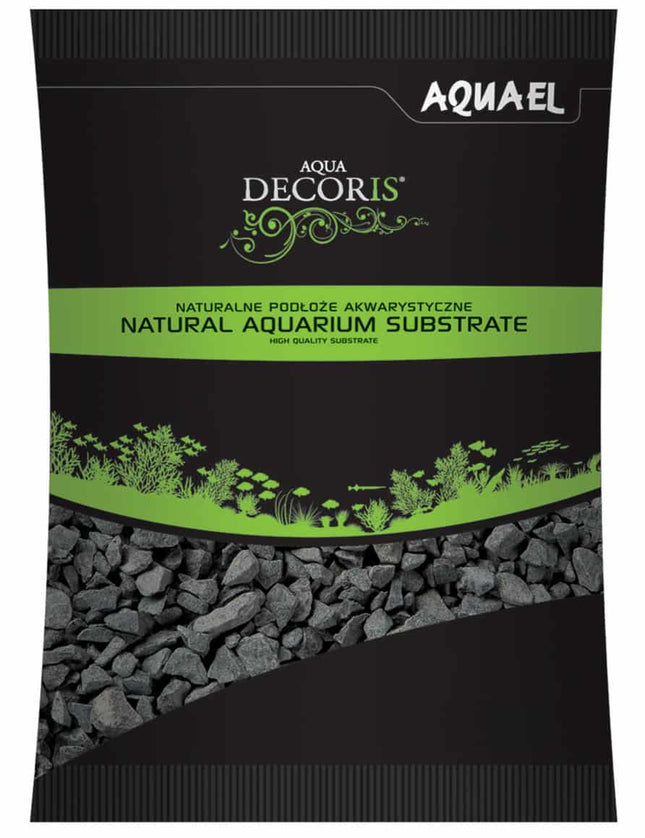
Aquael Basalt Gravel is a natural, decorative gravel for aquariums. This gravel is made from basalt, a type of volcanic rock, and is ideal for providing a natural look to your aquarium. The Aquael Basalt Gravel is a dark grey colour and comes in 2-4mm pieces. Each 10kg bag is enough to cover most aquariums and is suitable for both fresh and saltwater tanks. This gravel is safe for fish and plants and will help to create a natural environment in your aquarium. PLEASE NOTE THAT SENDING THIS ITEM HAS OTHER CHARGES AS IT WILL NEEDING TO BE SENT BY ITSELF. THE COST SHOULD START AT $20
$35.00

AquaEL Basalt Gravel 2-4mm 2kg is a natural aquarium substrate made from crushed basalt. The particles range in size from 2 to 4mm and the package contains 2kg of the gravel. The dark grey colour of the substrate provides a natural look for aquariums and is suitable for all types of fish, plants and invertebrates. The texture of the substrate helps to anchor plant roots and provide a natural environment for microorganisms to thrive. The gravel also helps to keep the water soft and clean, while promoting the growth of beneficial bacteria.
$10.00
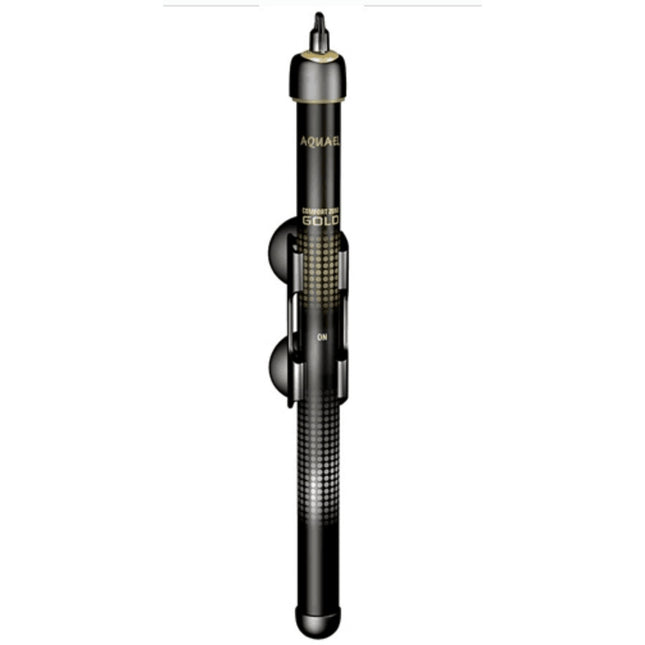
2 Year Warrantyhighest standard of qualitythermostat with gilded contactscomputer-assisted testing of every single device COMFORTZONE GOLD is a glass aquarium heater with a thermostat whose contacts are covered with a layer of gold. Conventional glass heaters for aquariums basically consist of a thermostat, thermostat contacts, and a heating coil. The thermostat controls the water temperature in the tank and, when necessary, switches the heating coil on or off by connecting or disconnecting the contacts. Thermostat contacts constitute the weakest link of this system. Although their operation is electronically assisted, metal oxidation gradually causes their surface to corrode. Corrosion shortens the useful life of the heater and decreases the precision of their operation. In COMFORTZONE GOLD heaters, this problem has been eliminated thanks to the electro deposited coating of thermostat contacts with a layer of gold. Being one of the least reactive metals, gold is resistant to oxidation. This solution significantly extends the useful life of COMFORTZONE GOLD heater and keeps the precision of its operation. This heater guarantees many years of failure-free operation and complete thermal safety of the animals kept in your aquarium. In order to guarantee the highest quality of workmanship, every single COMFORTZONE GOLD heater, before it gets to the end user, undergoes computer-assisted testing and calibration at AQUAEL’s professional laboratory. The accuracy of the thermostat is within ±1°C. The new COMFORTZONE GOLD heaters can be used in freshwater and marine aquariums of virtually any size. Thanks to their black colour, they can be easily made inconspicuous in an aquarium. SpecificationCOMFORTZONE 25 W GOLDSize 29x29x240mmAquarium Size 10 – 25Wattage 25
$64.95
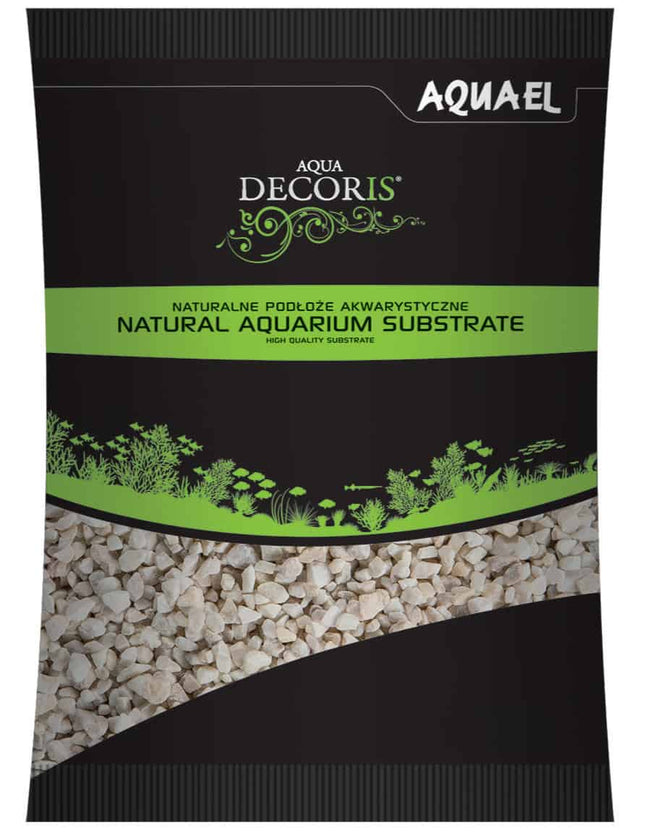
AquaEL Dolomite Gravel is an ideal substrate for freshwater aquariums. This natural, light beige gravel is composed of dolomite, a sedimentary rock which is rich in calcium and magnesium. The 2-4mm grain size is perfect for most aquariums, allowing for adequate water movement and filtration while providing a secure anchor for plants, and allowing beneficial bacteria to colonize. This 10kg bag is great for larger aquariums and provides an attractive, natural look.
$25.41
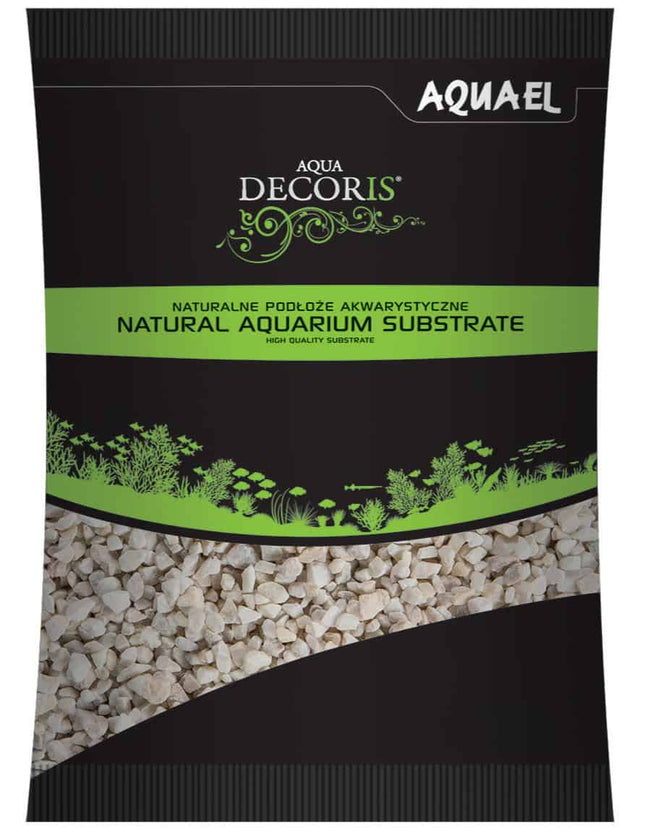
Aquael Dolomite Gravel 2-4mm 2kg is a natural, lightweight, and decorative aquarium gravel. This gravel is composed of crushed dolomite, a sedimentary rock that is popular for aquariums due to its neutral pH and calcium and magnesium content. The gravel has a particle size of 2-4mm and is a light tan color with hints of grey and white. This gravel is ideal for freshwater aquariums, terrariums, and other decorative applications. It can be used as a substrate for aquatic plants and provides a natural look to any aquarium.
$8.00
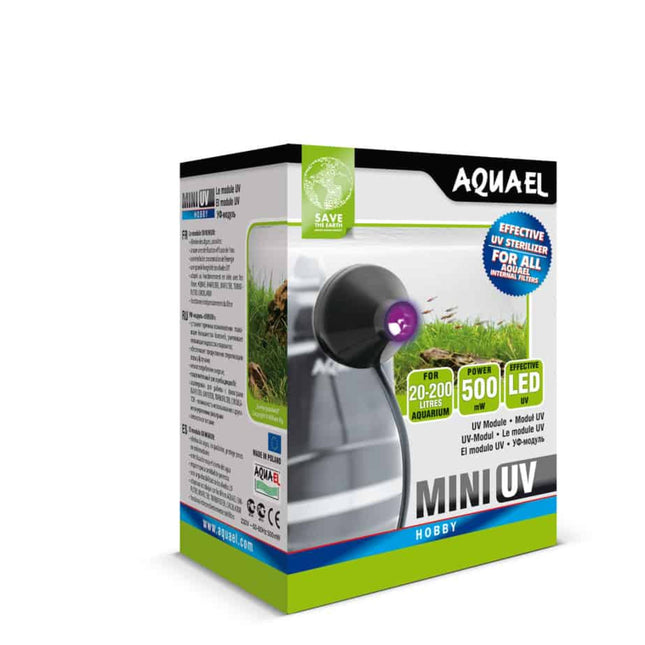
The AquaEl Fan Filter Mini Plus is a small aquarium filtration system that is perfect for use in small aquariums up to 50 litres. This efficient filtration system is easy to install and maintains a healthy environment in your aquarium. The filter is equipped with a powerful fan which helps to circulate the water and remove any dirt or debris. The easy-to-replace foam filter cartridge captures small particles, while the activated carbon helps to remove odours and discolouration. The adjustable flow rate allows you to set the perfect level of filtration for your aquarium. Additionally, the filter is energy efficient and has a low noise level.
$49.95
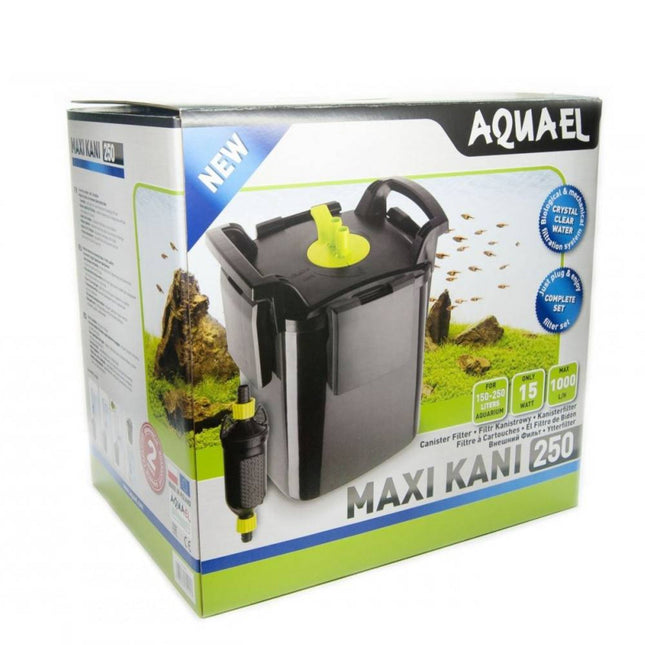
The Maxi Kani is a versatile canister filter with functions that are not found in other conventional canister filter. Canisters in the Maxi Kani range are operated with an external pump which can be run both inline or submersed. This design change allows for the following. By running the pump submersed in the aquarium a Maxi Kani can operate at significantly lower water levels compared to other options. The flow control dial can be detached for servicing. This allows the pump to continually circulate water while the body of the canister can be disassembled and serviced without disturbing the aquarium. Since the pump can be run submerse the Maxi Kani does not rely on gravity to feed the canister body. This allows for the canister to be placed at the same height or even above the aquarium. Running the pump submersed also results in a canister that is self priming requiring no priming pumps or other procedures. The Maxi Kani also comes with a range of standard quality of life features found in other canisters like flow control, solid clamps and convenient handles.
$349.95
You have seen 144 out of 1934 products